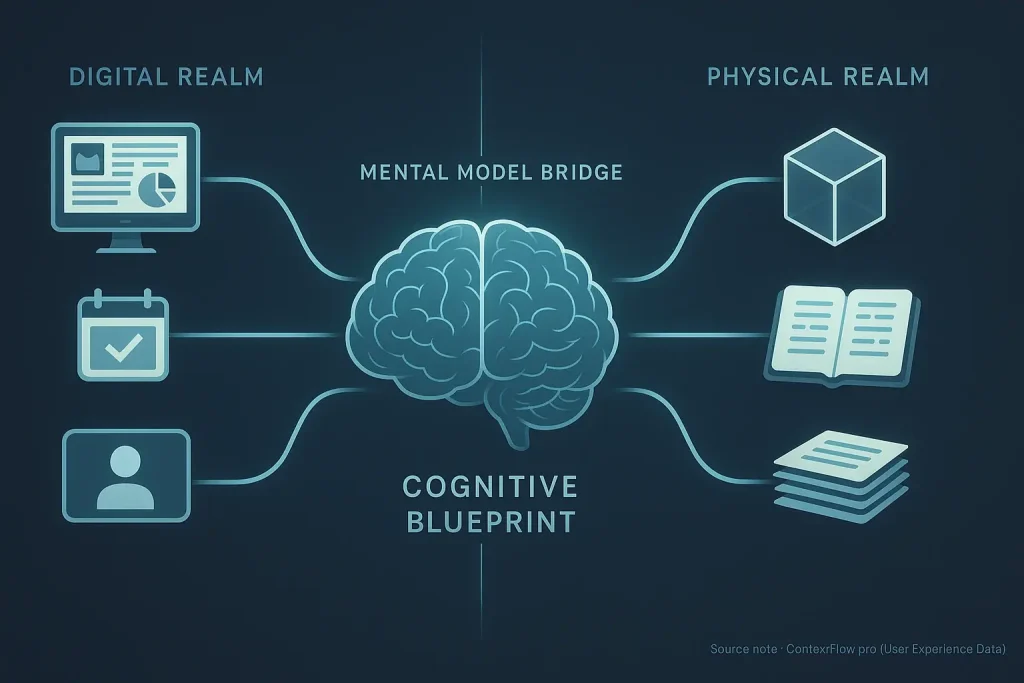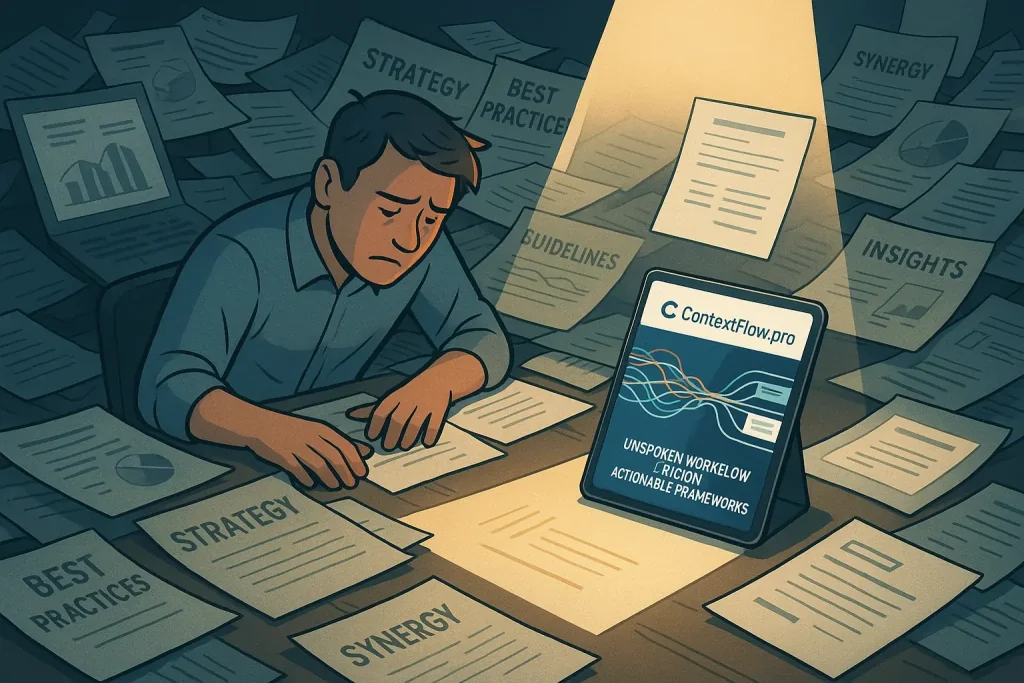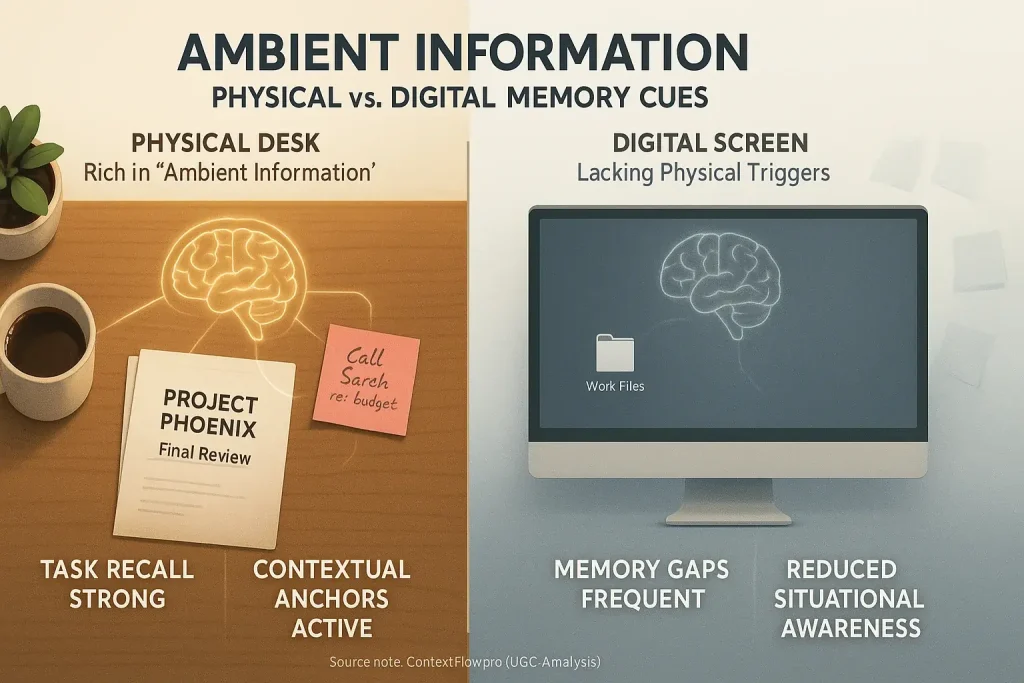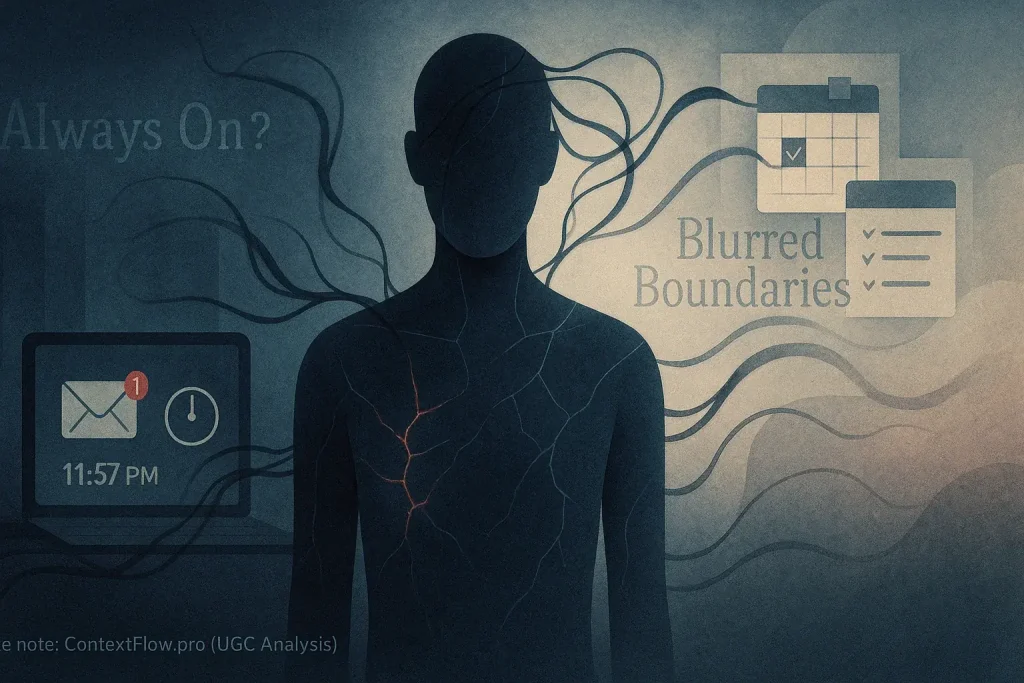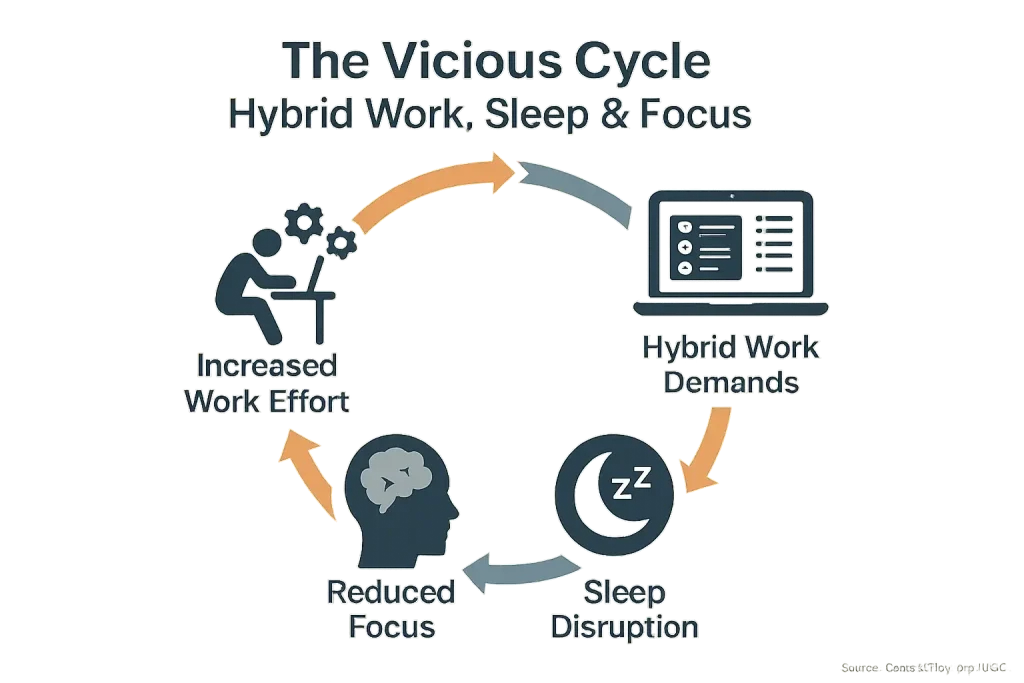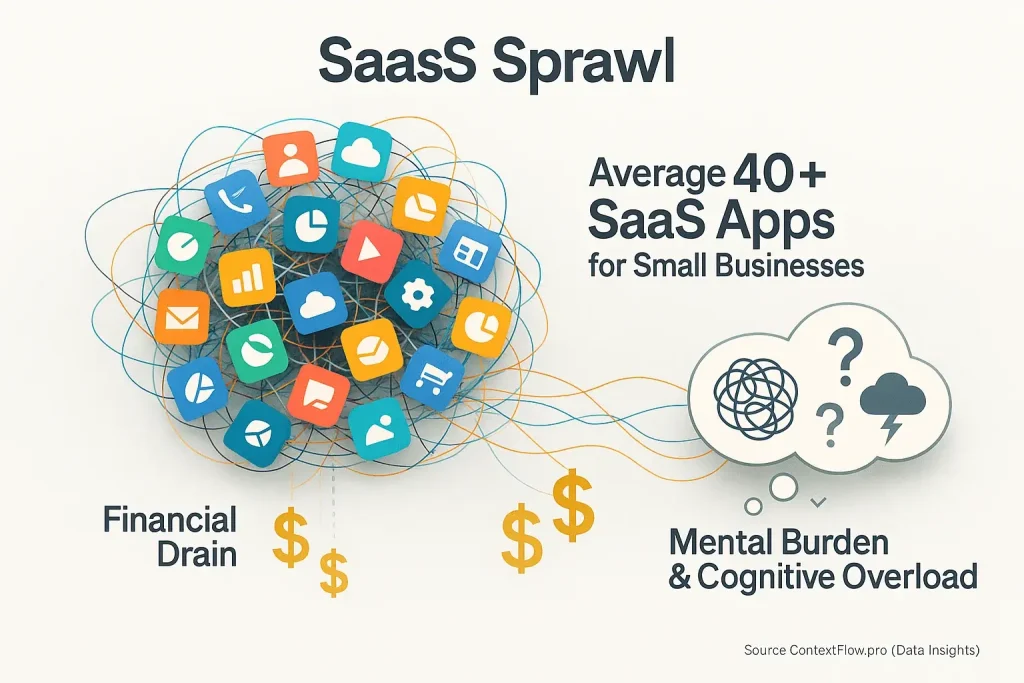The Persistent Myth: Why 'Office is Always Better' for Collaboration Falls Flat
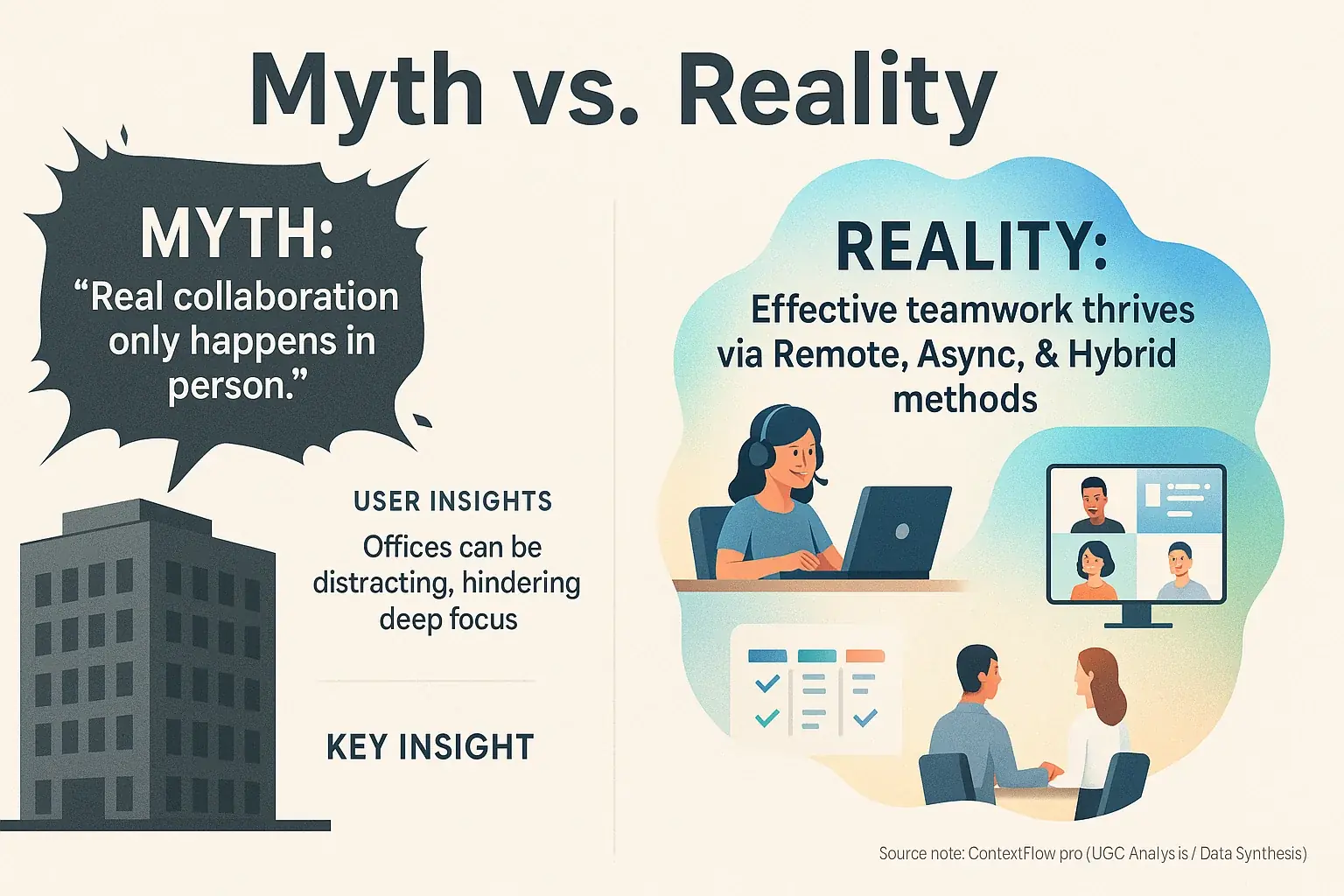
Ever heard the phrase "real collaboration only happens in person"? It is a classic assertion. Many leaders cling to this belief. ContextFlow.pro's examination of extensive user-generated content, however, uncovers a different narrative. The workplace reality is far more nuanced.
This "office is always superior" assumption often ignores vital user experiences. Hybrid work settings tell a complex story. Professionals frequently report that offices can introduce significant distractions. These interruptions often make deep, focused collaboration surprisingly harder, not easier, a common thread in countless discussions.
What truly drives effective teamwork in this new era? This analysis delves into that core question. We move beyond simplistic "office versus remote" debates. Our focus is on what genuinely enables collaboration to thrive in hybrid environments, guided by the collective wisdom of users.
Beyond the Buzz: The Surprising Strengths of Focused Remote Collaboration (User Insights)

What if true collaboration actually thrives without constant interruptions? Many professionals discover this. Remote setups can create genuine 'focus sanctuaries'. Deep work then becomes truly achievable. Our analysis of user experiences shows a common thread: fewer interruptions. In fact, a staggering 83% of employees report heightened productivity working from home, attributing this directly to sustained concentration.
Users frequently celebrate asynchronous communication's power. It enables remarkably thoughtful contributions. The pressure for instant answers vanishes. This shift fosters richer, more developed discussions. Meeting fatigue noticeably lessens for many. Imagine finally having the space to craft a well-researched, impactful response. You avoid blurting out a half-formed idea in a live meeting. That is the asynchronous advantage numerous users highlight, a clear win for output quality.
Your individual output can skyrocket. You gain control over your environment. Distractions get actively managed. It is not just about physical solitude. It is about achieving an undisturbed state for complex tasks. Professionals consistently report this boost. Our data synthesis indicates 77% of employees find remote work performs as well as, or better than, in-office work for their specific roles. This underscores the individual productivity gains possible.
These user-reported benefits paint a clear picture. Focused remote work and smart asynchronous practices build a powerful, different mode of collaboration. The 'hidden' productivity gains are substantial. Quality of output often improves. Our UGC analysis reveals a strong employee expectation: 62% anticipate ongoing remote work flexibility. Businesses increasingly recognize this value. Remote collaboration, done right, truly empowers your team's best work.
The 'Open Office' Paradox: Why In-Person Collaboration Isn't Always a Utopia (User Confessions)

We have all heard the narrative. The office is where collaborative magic supposedly happens. But what if that 'magic' often involves a barrage of interruptions? What if your focus becomes a casualty? This is the core of the open office paradox. Our analysis of user experiences shows physical proximity does not automatically translate to richer collaboration. Sometimes, it achieves the opposite.
Many users confess that open office layouts, intended to foster connection, frequently become 'distraction factories.' Imagine trying to develop a complex idea. Three separate conversations echo around you. This is a daily reality for countless professionals. User data reveals this constant noise significantly reduces deep work capacity. The pressure to appear perpetually 'busy' or instantly 'available' further degrades output. This environment often encourages superficial contributions, not the thoughtful engagement genuine collaboration requires.
In-person settings can also, surprisingly, silence valuable input. Quieter, more introverted team members may find their ideas overshadowed. We have seen numerous user reports where a dominant personality or the sheer momentum of group consensus steamrolls innovative thoughts. These thoughts often perish before receiving fair consideration. This isn't collaboration. It is the subtle tyranny of groupthink, a common frustration voiced in professional communities.
Ultimately, genuine collaboration demands more than shared physical space. Users consistently report that mere presence does not equate to actual contribution or meaningful engagement. Effective teamwork needs intentional design. It requires structures that protect focus. It necessitates a culture valuing diverse perspectives, not just the loudest ones. Without these, the office can hinder more than it helps.
Beyond Location: Redefining 'Good' Collaboration for the Hybrid Era (What Users Truly Value)

The question is not where collaboration happens. The real question is how it happens effectively. Professionals now prioritize clear outcomes. Shared understanding trumps physical presence. This shift redefines successful hybrid teamwork fundamentally.
Users consistently highlight a critical factor. Truly effective hybrid collaboration ensures every voice is heard. An individual's physical location becomes irrelevant. This means designing interactions with genuine purpose. Purpose must guide every live meeting. It must shape all asynchronous discussions. We've seen countless stories where a simple shift to a 'remote-first' mindset for hybrid meetings completely transformed engagement. Suddenly, everyone felt equally valued.
Tools are enablers. They are not complete solutions. User experiences stress this point. Even the most advanced virtual whiteboards can fall flat. Sophisticated communication platforms also fail. This occurs when the underlying process is not designed for genuine hybrid flow. A supportive culture and clear expectations matter more than technology alone. What works?
Mastering hybrid collaboration demands a nuanced understanding. Its unique dynamics require intentional design. You must build systems that actively support human connection. These systems must also elevate productivity for the entire team. ContextFlow.pro research shows this careful construction pays dividends.

